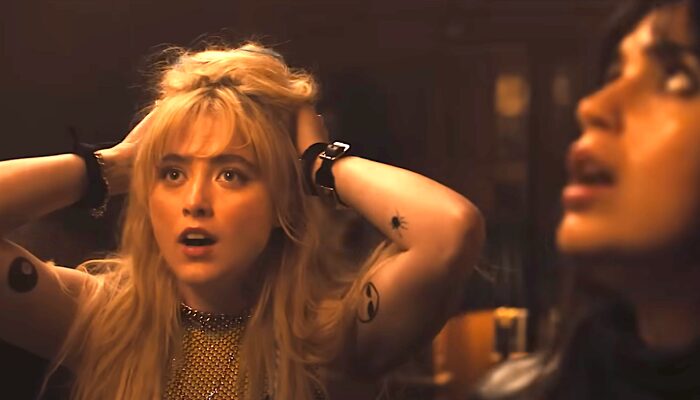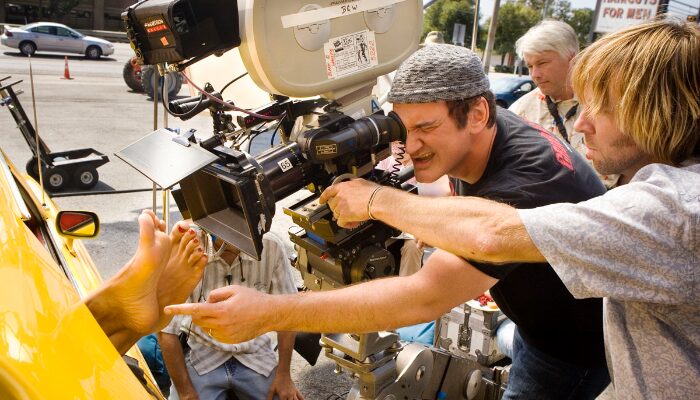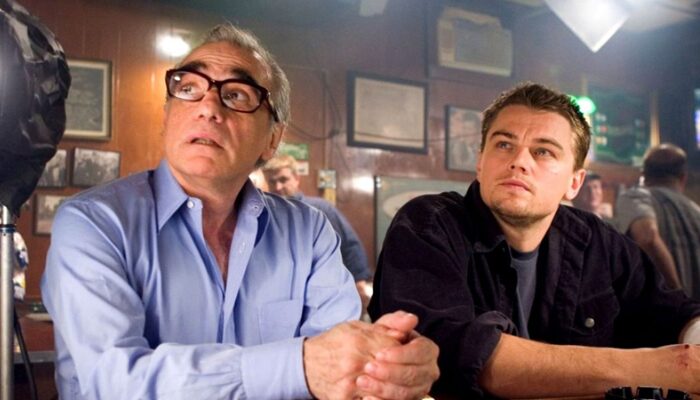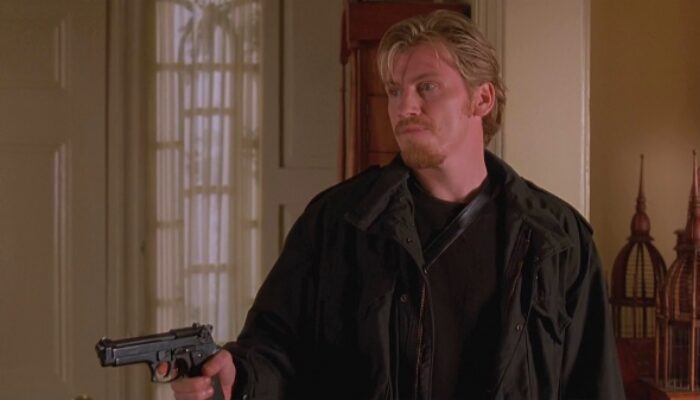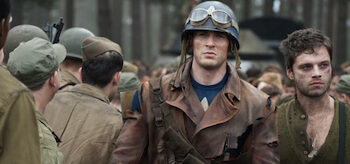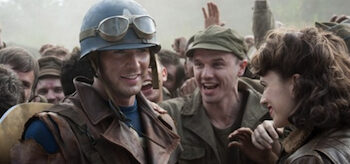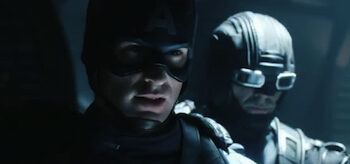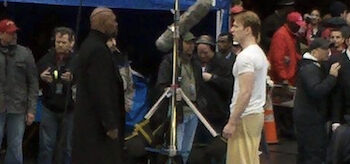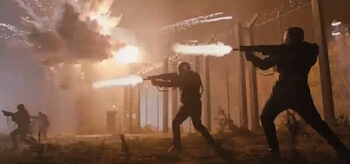Movie Review: CAPTAIN AMERICA: THE FIRST AVENGER (2011): Joe Johnston
Captain America The First Avenger Review. Captain America: The First Avenger (2011) movie review, directed by Joe Johnston and starring Chris Evans, Tommy Lee Jones, Hugo Weaving, Hayley Atwell, Sebastian Stans, Dominic Cooper, Toby Jones, Neal McDonough, and Derek Luke.
Captain America: The First Avenger’s first act and part of its second act are a nearly perfect superhero film; almost giving birth to another resplendent Iron Man but one that would have eclipsed its predecessor.
The first act consistently gains momentum as World War II rages on in the background and Steve Rogers (Chris Evans)’s need to enlist and “get into the fight” swells. This mentality is a result of a pre-television era where war news footage and photos showing the realities of war are not available, those sustaining the glamour of warfare instead of cultivating stark, universal repugnance towards it.
The first act of Captain America: The First Avenger is more of a Steve Rogers character study, who he is, what makes him tick, similar to Christopher Nolan’s Batman Begins, but unlike that superhero movie, the main character in Captain America: The First Avenger is far more empathetic.
The first act of Captain America: The First Avenger is filled with individualized segments that make an impression and stand out, telling the viewer that time and care had gone into the cinematography of this film.
One such scene featured Johann Schmidt (Hugo Weaving) getting his portrait painted. Director Joe Johnston does not give the viewer the immediate reveal. He shows restraint and an artist’s delicate, deft hand like Bryan Singer showed in X-Men with Erik Lehnsherr’s introduction and Logan’s cage smoking segment. Both of their faces were kept in the shadows during those moments, as is Schmidt’s. It’s up to the viewer and their imagination to fill in the rest. After so many lackadaisical superhero films of late (e.g. Green Lantern, Thor), it was refreshing to see a director that cared enough about his craft to set up such an exquisite shot/scene.
The first act of Captain America: The First Avenger is clean and precise, all the way up to a pivotal character’s death and its aftermath. Once Captain America begins selling war bonds, think Flags of Our Fathers, the viewer can feel the momentum of the film drop. This is one of those sequences that if it had hit the editing room floor, the film wouldn’t have missed it and the film’s flow would have dramatically improved, as was the case with the deleted dance sequence in Zack Synder’s Sucker Punch. The war bond sequence ushers in the second act of Captain America: The First Avenger and initiates the appearances of the film’s flaws.
Steve Rogers’ traumas growing up (the early use of the shield, a metaphor for protection, protecting the weak) and his health issues had the same positive effect on him that abuse would negatively have on someone else (producing a sociopath). His mind is bent on good, goodness, doing the right thing, and stopping bullies no matter what form they take the same way a sociopath’s mind is bent on melancholy, mischief, destruction, and murder.
This, in many ways, makes Steve Rogers like the focused, justice paragons Batman and Superman. In Rogers’ case, he is only “a good man” with common sense and ingenuity. He is not nearly omnipotent like Superman or rich with a billion dollar arsenal from which to fight crime like Bruce Wayne. Steve Rogers is ordinary, an everyman.
Another factor that makes the first act of Captain America: The First Avenger almost singular amongst its brethren (like Iron Man, it didn’t forget good storytelling) is the subtle relationship (father, son, mentor, student) that forms between intuitive Dr. Abraham Erskine (Stanley Tucci) and Steve Rogers. Dr. Erskine sees inside Rogers what his super soldier serum brings to the surface. Their quite moments together are better than the majority of the action sequences in the film’s second and third acts. It is not just what is said between the two of the them but what isn’t said as well e.g. the doctor tapping on Roger’s chest during a morose moment. They are two unlikely people in something far larger than themselves.
Besides Dr. Erskine and Steve Rogers, the two most surprising characters in the film were the aforementioned Schmidt and Strategic Scientific Reserve Officer Peggy Carter (Hayley Atwell). What could have easily been written as a pretty face role, screenwriters Christopher Markus and Stephen McFeely made Carter Steve Rogers’ eventual confidant, possible love interest (predictable), and a sharpshooter on the level of Secret Service Agent Nina Chance of Murder at 1600 and Fringe Agent Olivia Dunham from television’s Fringe. No hint of this is given until Carter is called into action by circumstance and the viewer is then dazzled by her marksmanship.
The pivotal situation surrounding her first call to action is one of the best dramatic scenes and action sequences in the film and draws attention to the earlier fact that this is the bloodiest and most violent PG-13 Marvel superhero film to date next to Daredevil: Director’s Cut. These scenes and the first act of Captain America: The First Avenger make the viewer believe he is watching something different, something more than a mere assembly line, superhero origin story film.
Unfortunately, Carter’s presence and rank in the U. S. Army is nonsense and fallacious for the 1940’s United States military. Women couldn’t serve in the field; there was no Basic Training or Officer Candidate School for women nor was there a senatorial mandate allowing them to serve. If Carter was a British liaison officer (which she could have been but then why is striking unruly U.S. Army personnel), why is she in a U.S. Army uniform? Also, where would she get such a uniform since they do not exist in that time period?
For that matter, were Black and Asian United States Army soldiers harmonious present in the U.S. Army at that time period as well? Perhaps the viewer is supposed to know or believe that this is an idealized, romanticized version of the 1940’s where gender and racial equality exist far ahead of their actual incarnation within our universe and timeline.
Like Quentin Tarantino’s Inglourious Basterds, Captain America: The First Avenger strives for 1940’s authenticity yet makes alterations to the events of World War II. These alterations are in conflict with the modern day worlds presents in Iron Man, The Incredible Hulk, and Thor (films in The Avengers space/time continuum). Schmidt’s energy weapons that the Allie soldiers commandeer could have instantly turned the tide in the war and the weapons’ technology would have changed the world. None of these implications are present (in Iron Man, The Incredible Hulk, Thor) or explored. These are plot snippets left to dangle and infuriate in the back of the viewer’s mind.
Knowing it was coming during the third act of Captain America: The First Avenger, the viewer probably never expected Christopher Markus and Stephen McFeely to explain how an organism frozen rock solid from the inside out could reanimate when unfrozen like the alien in John Carpenter’s The Thing. The answer is obvious: the super soldier serum and the Theta radiation treatment made it possible but showing the audience how he was brought back to life would have been exciting to see (remember Luke Skywalker in the hot water tank in Star Wars: Episode V – The Empire Strikes Back), far more so than war bond stage shows.
Another situation that went almost unseen and totally unanswered was that if the super soldier serum raised Steve Rogers’ metabolism to four times the normal rate, that means he would be four times as hunger since his stomach/food intake system would digest and absorb food at four times the normal rate. He would need to eat high volumes of food like The Flash did on the ‘90’s CBS TV show every single day for the rest of his life or suffer extremely annoying hunger pains. Why hint at this (he can not get drunk because of this metabolism) and not explore it? They explored war bond sales.
Finally, when and where did Steve Rogers learn to fly planes and where did he learn how to fly them so precisely and accurately? He only went through Basic Training School not Flight School. How did he know how to fly a one-of-a-kind, prototype plane like Schmidt’s at the end of the film? There is no explanation for these occurrences once-so-ever in the film. These are instances of Steve Rogers operating completely outside the scope of his evidenced skill set. These instances had no place in the film (they should have been excised and replaced with something more appropriate for his character) yet they are there, one of many irritating Captain America: The First Avenger plot flaws.
The scant brevity of Captain America: The First Avenger‘s Strategic Homeland Intervention, Enforcement and Logistics Division (S.H.I.E.L.D.) ending was agonizing. The S.H.I.E.L.D. building housing the majority of the film’s ending was idiotic, with all the stringent security protocols of a carnival funhouse. In reality, the S.H.I.E.L.D. building would have the security protocols of the C.I.A. (thick, soundproof walls, locks on every door, every file cabinet, et cetera) but in the Marvel universe or ‘verse, this is not a possibility. In our reality, no one, not even with Steve Roger’s abilities, would be able to move from floor to floor in a building like S.H.I.E.L.D.’s without a security code and clearance yet in Marvel’s reality, bust through one wall, run, and you are out the door.
Christopher Markus and Stephen McFeely spent that entire, excoriating amount of time on war bond sequences yet skimped on the film’s finale. They do not show Steve Rogers looking in awe at all of the changes to New York City as he is running, fleeing from his would-be S.H.I.E.L.D. jailers or at the strange attire on the backs of the people around him on the teeming metropolitan streets. I wish smarter screenwriters’ minds had prevailed with the ending to this film. They did briefly by imbuing Steve Roger’s with the innate ability to see the obvious and overlooked e.g. the flag atop a flagpole scene. This common sense ability was brought out again when he notices a radio program playing across the airwaves during the S.H.I.E.L.D. ending. Because of this, the film’s final moments are not completely devoid of intelligence (on Roger’s part) and reality. With the quality of the film’s first act in mind, the resolution of Captain America: The First Avenger deserved to be heftier and elongated (a cat and mouse sequence on the streets, in the subway between S.H.I.E.L.D. agents and Steve Rogers perhaps), not the sudden stop that occurs with the film before the credits role.
Steve Rogers’ casual, laconic response to critical, life-shattering news about where and when he presently resides was laughable. He takes the news that his world, everything he had fought and nearly died for, his parents, and Peggy were gone with such ease it makes the viewer wonder if these things ever meant anything to him at all. Remember the earlier parallel drawn between Steve Roger’s personality and that of a sociopath’s. Apply that to this situation.
Joe Johnston’s Captain America: The First Avenger is an imperfect superhero film that could have been as good as Batman Begins if its last two acts had not faltered to the extent that they did and if that special spark that the film began with had not gotten lost within explosions, subdued behind propaganda, covered in S.H.I.E.L.D., and used as an ad for a certain, upcoming superhero team movie.
Rating: 7.5/10
For more Captain America: The First Avenger videos, photos, and information, check out our Captain America: The First Avenger Page. Buy Captain America: The First Avenger on Blu-ray and DVD.
Related Articles
FilmBook's Newsletter
Subscribe to FilmBook’s Daily Newsletter for the latest news!

